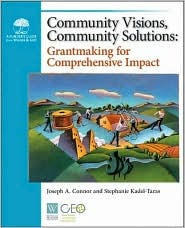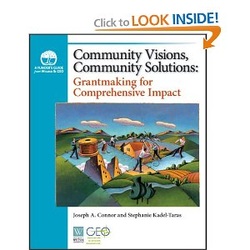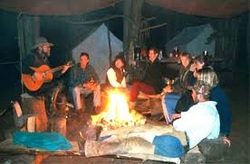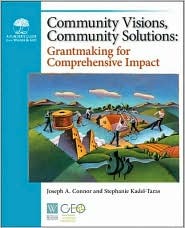Many collective impact initiatives stumble at this point. Usually because they take the eye off a fundamental dictum of working differently: its all about the outcome. Instead, blame for prior bad behaviors creeps in and the discussion falls back into accusation or constraint ("we can't achieve the goal because these people won't __________________.")
This point of transition to community action to support changed behavior can turn into a cul de sac of blame or shame unless there is crisp focus on the desired outcome. To minimize this from occurring, I think the key is "loose-tight." That is, you want people to be creative and feel they own the work but you also want to be prescriptive enough that the result is far closer to the transfer of action to the community versus lowered expectations or more committee work.
Using parent engagement as an example: the goal is not shaming or blaming -- assume a proper intent; i.e., those parents you are going to move DO care deeply about their children and either don't have clarity as to what they need to do or have impediments (like two jobs or negative feelings about education from their own experience). Therefore, the community actions - to be outcome focused - need to be about moving those two "drivers" of suboptimal behavior. Here are examples from several communities that maybe relevant:
- Employers agreed to give parents time-off to go to parent/teacher meetings or at the minimum go to the phone if the school calls about their child.
- Schools have understood that some parents first met failure at the school (sometimes the very building where their children are). Thus they have been open to meet parents at a "neutral" setting: community center, etc.
- Employers (and other gathering place for parents, like stores and churches) have provided books for parents to take home (or other supplies). In some cases they modeled skills of how to read to their children. If you were never read to, it could be very hard to know the best approaches for reading with your child.
- Use the K-ready checklist and other parent-tips in employee, church etc., newsletters. Have them posted on community bulletin boards at the supermarket, etc.
- UWay's, CATs, Schools, Action Teams have provided "Checklist Classes" where best practices and skills are discussed about what parents can do to help move a child along the k-ready checklist. We've seen these classes be done in employee break rooms, in church basements, and in vacant stores at the mall.
- Local Arts organizations have offered traveling Art Together classes where parents (many of whom were never introduced to even the rudiments like finger-painting by their own parents) are given the chance to "play" with their children.
- Some of the reasons why parents don't attend is as simple as child care.
All of the above assume a desire on the part of the parents and help either remove impediments or bring knowledge to parenting for which they have no role model.
Depending on your desired other "outcome community action areas," I think you and/or the Action Teams can think through a no blame - no shame approach to mobilizing community action.









 RSS Feed
RSS Feed
